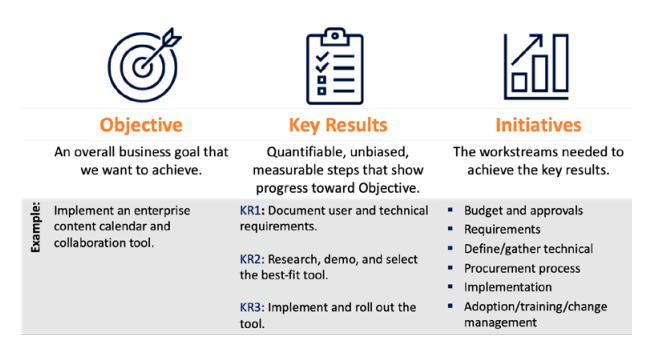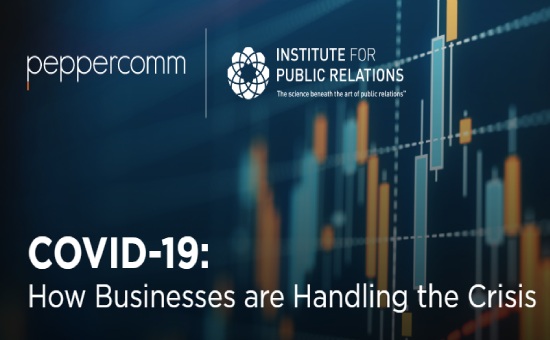The Quick-Start Guide to Operations Planning: Help Your Content Engine Work Smarter, Not Harder | Content Marketing Institute
Content Marketing
Content Operations Planning Is Too Important To Overlook
How extensively does your brand utilize content? From sales materials to marketing campaigns, clear and compelling communication is key. Can your content team meet these demands while aligning with your strategic goals? Crafting a high-performance content engine requires strategic focus, defined roles, optimized processes, and the right technology. Learn how to create a detailed content operations plan to streamline your efforts in this e-book.
Discover what content operations entail, the decision-making process, and essential plan details. Gain insights, shortcuts, and advice across four key stages: building your framework, empowering your team, establishing governance and workflows, and leveraging critical systems. Let our content ops guide simplify your journey to high-performance operations.
Content Operations, Demystified
Effectively managing content across an enterprise is a multifaceted endeavor, requiring the orchestration of numerous components. Even minor inefficiencies can escalate, leading to significant issues or disconnected content experiences. Planning operations allows for the identification and resolution of potential challenges before they impact team productivity. Additionally, it ensures that brand content upholds standards of quality, consistency, and engagement across various formats, platforms, and channels.
What is content operations?
According to Cathy McKnight of The Content Advisory, content operations provide a holistic perspective of all content-related aspects within your organization. It formalizes strategic decision-making, tactical responsibilities, and team resources necessary for effective content marketing. Additionally, it standardizes processes, governance procedures, and systems to ensure the delivery of seamless and satisfying content experiences to your audience. Cathy emphasizes that when executed correctly, content operations enhance efficacy and efficiency across processes, people, technologies, and costs.
Why you need an operations plan
Many brands are tempted to forgo formal operational planning and dive straight into content creation due to high customer demand and fierce competition for audience attention. However, this ad hoc approach can lead to issues, especially for enterprises:
- Rapid market changes: Without proper guidance, you risk missing out on key marketing opportunities and may struggle to comply with evolving industry regulations.
- Economic and workforce challenges: Rising costs and workforce trends like the “Great Resignation” demand efficient resource allocation. Planning is crucial to maintaining productivity.
- Cross-team misalignment: Lack of process clarity hampers effective collaboration across departments, hindering growth and scalability.
What goes in the plan?
The Operational Framework
What goes in the plan?
At the core of highly effective content marketing programs lies a comprehensive strategic framework. This framework delineates the content’s purpose, its distinct value proposition to the audience, and its specific objectives. Consider it akin to master blueprints, shedding light on all organizational components supporting your program. Serving as a unified reference point, it steers your team’s efforts and ensures outcomes align with your brand’s marketing standards.
Despite its significance, Airtable’s 2022 Marketing Trends research revealed that 0% of marketers possess the essential single source of truth for holistic content management. This deficiency can lead to data duplication, increased manual workload, and heightened stress levels among teams. Prioritizing investment in your content operations framework can alleviate these challenges.
How to build it
Just like assembling furniture, building a home, or launching a business, clarity is crucial in knowing the intended outcome and functionality. A defined model guides the construction process to ensure each component meets the required specifications.
ACTION ITEM: In content marketing, this vision begins to take form once you address three fundamental questions:
- What is the purpose of creating content for your organization?
- How does your content uniquely benefit the target audience?
- What outcomes do you anticipate?
If your brand lacks a documented content marketing strategy, follow the steps below to gather essential details.
Step 1. Define your content’s purpose
You probably have several marketing objectives you want your content program to fulfill, such as boosting brand awareness, expediting the lead pipeline, or cultivating a subscribed audience. However, when delineating your content’s purpose, it’s essential to look beyond the marketing department and consider your brand’s broader goals.
Ultimately, the budget and support needed to execute your operational plans rest with your executive stakeholders. While the C-suite may value expanding audience reach or attracting subscribers, these milestones won’t resonate with management if they don’t align with the business’s objectives.
ACTION ITEM: To align your purpose with their vision of success – not just the marketing team’s aspirations – ponder these inquiries:
- What challenges does our business face with current strategies?
- Which of these gaps poses the greatest threat to our brand’s success?
- How can we enhance efficiency or reduce costs for the company?
- What new business opportunities or markets could we explore with the right resources in place?
Developing your operations strategy from this strategic standpoint will enable you to define content success in terms that resonate with executive management.
Step 2. Develop your content mission statement
While your purpose outlines your brand’s objectives, your content mission should revolve around the distinctively valuable experience your content offers your audience. Crafting a content marketing mission statement is crucial for cementing this experience.
Your mission statement should encompass your brand’s unique perspective on content’s value, the target audience it serves, and the guiding priorities and principles it adheres to. Additionally, it can incorporate specific creative elements such as:
- Story themes, content types, and messaging tone
- Preferred media formats, publishing frequency, and distribution channels
- Strategies for delivering a cohesive content experience throughout the buyer’s journey
This information aids in guiding tactical decisions: If a content idea doesn’t align with the mission, it can be discarded before it disrupts your team’s focus and productivity.
ACTION ITEM: Delve into these questions to craft a mission statement that sets your content apart:
- Who are we as a company? What values and principles define us?
- How does our business uniquely assist our audience?
- What benefits does our content offer our audience? What sets it apart?
- What outcomes do we aim for our audience to achieve through our content?
A prime example is The Hustle’s mission statement: “We simplify complex business information to empower quick decision-making. Our mission is to provide accessible insights for busy individuals seeking valuable knowledge.” This statement not only elucidates the audience’s benefits but also maintains the brand’s distinctive tone across its content.
Step 3. Set your goals and objectives
A content marketing strategy that proves effective for other businesses might not align with yours. Defining “success” from your brand’s perspective is crucial. This aids in setting meaningful goals and accurately evaluating content performance.
One method to accomplish this is by establishing OKRs (Objectives and Key Results). Cathy McKnight outlines this approach:
“OKRs typically entail defining an objective, or overarching business goal, along with three to five measurable outcomes. Milestones are then set to ensure alignment with the objectives,” explains Cathy.
For instance, suppose your objective is to implement an enterprise content calendar and collaboration tool. Key results may include:
- Documenting user and technical requirements
- Researching, demonstrating, and selecting a tool
- Implementing and rolling out the tool
To track progress effectively, create a checklist like the one Cathy provides, detailing the tasks and components linked to each result. Ensure your OKRs are measurable and verifiable. Define the data sources and metrics essential for assessing progress toward each objective. If assistance is needed, refer to our Essential Content Marketing Measurement Guide.

The Table of Contents of “The Quick-Start Guide to Operations Planning: Help Your Content Engine Work Smarter, Not Harder”:
- Content Operations Planning Is Too Important To Overlook
- Content Operations, Demystified
- The Operational Framework
- Organizing and Empowering Your Team
- Establishing Governance, Processes, and Workflows
- Supporting Success With Critical Systems and Technologies
Number of Pages:
- 33 pages
Pricing:
- Free
Warning: Undefined array key "sidebar_ads" in /home/dmc/public_html/wp-content/themes/DMC/functions/helpers.php on line 824






